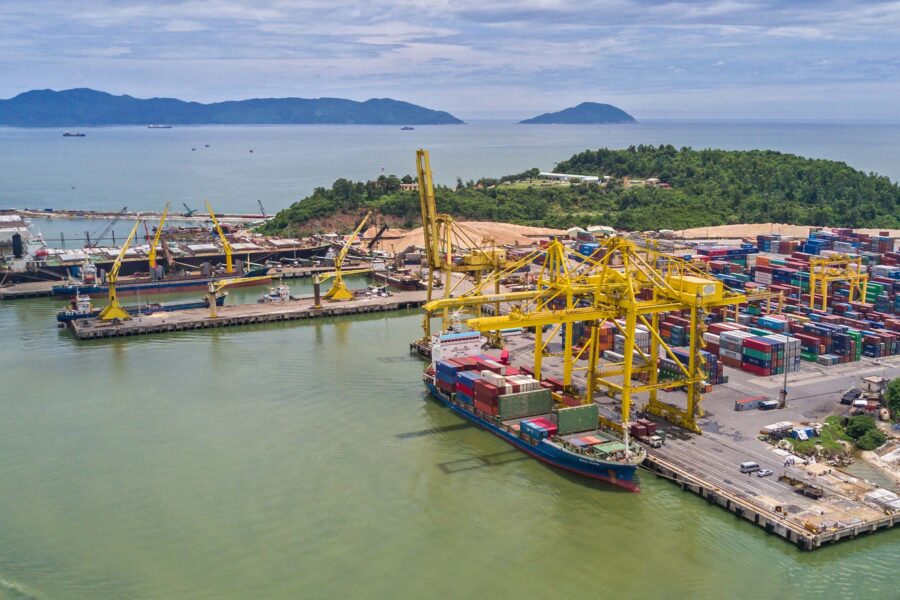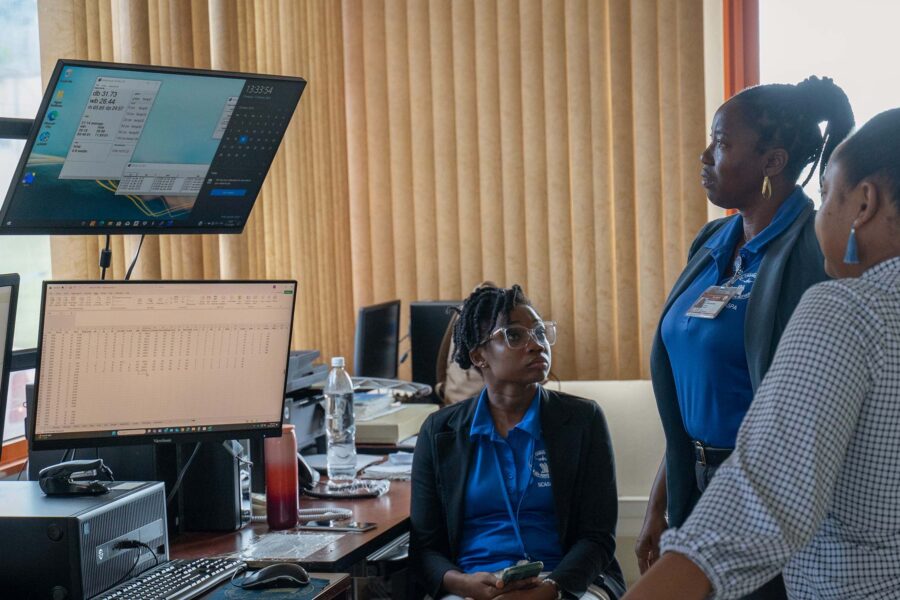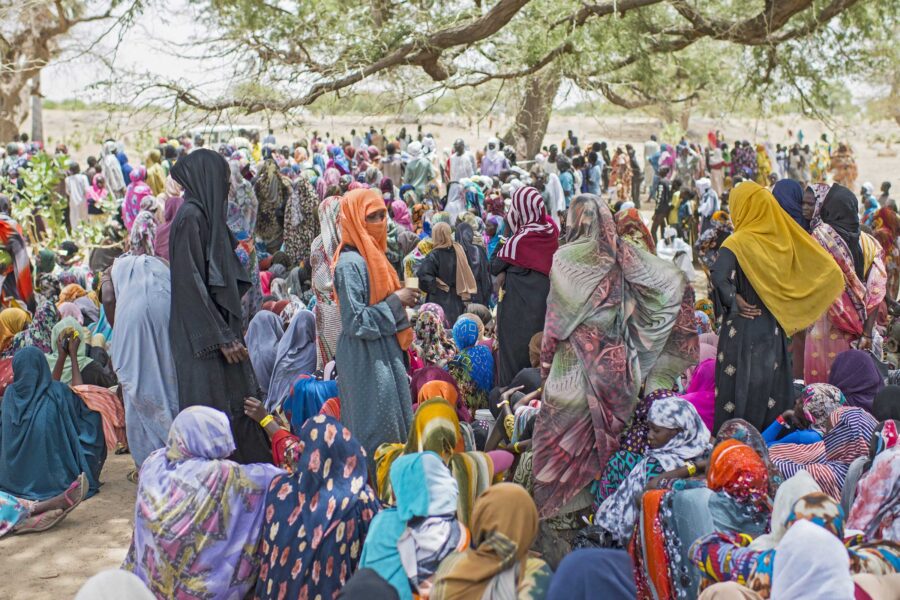What role can carbon markets play in preserving forests?
Evidence is mounting that forest carbon offset credits are not working. Can a new approach, based on countries and companies making wider contributions to climate action beyond offsetting emissions, save the world’s forests?
Climate — Global

Ever since REDD+ (reducing emissions from deforestation and forest degradation) burst on to the international scene at the climate change negotiations in 2008, market-based transactions of forest carbon have been envisaged as a way of transferring billions of dollars of climate finance. The hope was that funds would flow not just to the governments of tropical-forested developing countries but further on to indigenous peoples, forest-dependent local communities, and those protecting forests.
To date, this has not happened. Of the market-based climate finance that has flowed during the past 15 years, it has been primarily through REDD+ projects in the voluntary carbon markets (VCMs). This has not been anywhere near sufficient to ensure the preservation of the world’s great forest biomes. After slowing slightly in 2021, this year’s Forest Declaration Assessment reports that global deforestation rates increased in 2022. Some 66,000 square kilometers of forest were lost, putting the world 21% off track to meet the goal of ending deforestation by 2030 set by more than 140 countries at COP26 in Glasgow (after previous pledges of ending deforestation by 2020 were already missed).
With the rapid increase in companies setting net-zero targets and committing to offset their emissions, there was great hope that VCMs, through REDD+ projects, would drive climate finance to forests. However, since an article published in The Guardian in January this year revealed that “more than 90% of rainforest carbon offsets by the biggest certifier are worthless,” there has been a steady stream of news reports questioning the integrity – indeed, the validity – of REDD+ VCM credits.
In mid-October, The New Yorker published a long exposé on the Kariba mega-project in Zimbabwe – one of the largest REDD+ projects. Forest carbon projects like this are responsible for about a third of all carbon credits certified by Verra, the world’s leading standard setter for VCMs. Now with the reported collapse of the Kariba project and the price of REDD+ project carbon credits at an all-time low, project-level REDD+ offset credits are mortally wounded.
In addition to the issues raised in the press, it is becoming clear that transition plans to net zero that are considered “high integrity” will only allow a small proportion of a company’s value chain emissions to be offset with forest carbon project credits. So, while REDD+ project credits might continue to be developed as offsets for residual emissions within value chains, and while project methodologies, monitoring, and carbon accounting data will continue to improve, such credits are unlikely to be highly rated. What’s more, there will always be questions regarding the integrity of these carbon offsets.
Yet REDD+ is essential if the global community has any chance of meeting the Paris Agreement targets by 2030. There is certainly a need to reward tropical-forest developing countries for the efforts they make in reducing deforestation and forest degradation. Are there market mechanisms other than project credits that can direct desperately needed climate finance to these countries to support their Paris Agreement ambitions (referred to as nationally determined contributions, or NDCs) and help preserve forests?
Jurisdictional REDD+ offset units
Under the United Nations Framework Convention on Climate Change (UNFCCC), REDD+ does not include project-level methodologies. VCM REDD+ projects took off separately while the UNFCCC approach was still being negotiated. The UNFCCC takes a “jurisdictional” approach (J-REDD+), where reductions in emissions from deforestation and forest degradation are measured against national, historical levels based on the government’s national greenhouse gas (GHG) inventory.
Many of the integrity concerns raised with REDD+ VCM credits are better addressed at the jurisdictional level – for example, leakage, inflated baselines, inflated methodologies, or lack of additionality (GHG reductions are not considered additional if they would have happened anyway without a market for offset credits). Moreover, tropical-forest developing countries have been building their capacities to deliver J-REDD+ results for the past 15 years. J-REDD+, therefore, has the potential to supply the largest volume of high-quality, nature-based climate results.
The market for J-REDD+ is just getting going, with the creation of an international standard for J-REDD+ credits called TREES. There has been initial interest from the market for TREES units, as evidenced by the LEAF Coalition. Hopes are therefore high that jurisdictional approaches could be a game-changer in the carbon market, with the potential to deliver large-scale, high-quality issuances.
However, J-REDD+ still faces issues – such as carbon rights and permanence – that make it hard to scale up as offsets. The first TREES units were only issued at the end of 2022 (for Guyana) and these were a particular type of TREES units called “high forest, low deforestation” (HFLD) units – for which there are questions about the appropriateness of using as offsets. No other TREES units have been issued yet. Furthermore, the TREES standard is not universally accepted. The Coalition for Rainforest Nations has tried to introduce competing “REDD.plus sovereign credits.” There have been few buyers for these units, but it has caused confusion and added to the uncertainty about REDD+ in the offset market.
Forest ITMOs
“Internationally transferred mitigation outcomes” (ITMOs) were created under Article 6.2 of the Paris Agreement to allow countries to collaborate on achieving their NDCs (referred to as “cooperative approaches”). What is unique about ITMOs is the requirement to include a “corresponding adjustment” during the transaction – meaning the emissions reductions or carbon removals are deducted from the host country’s NDC when they are added to the purchasing country’s NDC. Some think corresponding adjustments can solve the integrity concerns associated with forest carbon, making J-REDD+ a perfect match either for sovereign buyers needing to meet their NDC targets, or even for companies looking for “Paris compliant” credits.
Blue Carbon, a sovereign-backed private company based in the United Arab Emirates, has actively entered the market looking to buy forest ITMOs. It has signed memorandums of understanding with several African countries and has had discussions with Suriname – the first country to announce it will be putting forest ITMOs on the market (4.8 million tonnes of CO2e HFLD units).
Some debate continues as to whether forests are included within the ambit of an ITMO. This speaks to the esoteric nature of UNFCCC COP decisions. While there are no specific Article 6.2 eligibility limitations, ITMOs still need to meet requirements to ensure the environmental integrity of the mitigation outcome. This includes the requirement that ITMOs are real, verified, and additional – and manage risks of non-permanence. This could make it hard for forest ITMOs to be considered as high integrity.
Although there is currently very little “case law” for either J-REDD+ or forest ITMOs, neither solves the fundamental limitations of forest carbon (especially emissions reductions) being used as offsets. Whether it is a country wishing to use forest carbon offsets to meet its NDC target, or a company wishing to use forest carbon offsets to achieve its net-zero target, both will continue to face the same “greenwashing” risks that have already been exposed with VCM REDD+ projects. It’s hard to avoid the conclusion that forest carbon credits are simply not suitable as offsets.
Beyond value chain mitigation
Is there another market-based approach for forest carbon? There is an emerging concept of “beyond value chain mitigation” (BVCM) contributions as complementary to offsets. BVCM is where a company contributes to the collective global effort to reach net-zero emissions. The mitigation action is not used to offset the company’s emissions. Instead, the buyer makes a “contribution claim,” representing a contribution to both the company’s climate goals and to global mitigation efforts.
The rationale for BVCM is that:
- companies should be thinking about their role in the global net-zero transition, beyond abating their own emissions
- companies that do not take clear, credible climate action today – and go beyond commitments, to delivering on targets in line with the goals of the Paris Agreement – risk having their corporate reputation hit
- there are important sources of emissions outside corporate value chains, such as those linked to subsistence agriculture
- government policies are not yet sufficiently ambitious to deliver a 1.5°C future
In this way, a company would not be purchasing J-REDD+ credits to offset its own emissions. Instead, it would decarbonize its own value chain and use the purchased J-REDD+ credits to demonstrate that it is making a contribution beyond its own value chain.
This concept is being advocated by the Science Based Targets initiative (SBTi), widely considered to be the main driver of high-integrity, net-zero targets. SBTi states:
“Companies should take action or make investments outside their own value chains to mitigate GHG emissions in addition to their near-term and long-term science-based targets. Examples include purchasing high-quality, jurisdictional REDD+ carbon credits that support countries in raising the ambition on – and, in the long-term, achieving – their nationally determined contributions.”
BVCM is perfect for forests. When J-REDD+ credits are not being used to offset actual value-chain emissions but are being claimed as a “climate contribution,” debates such as whether to use emissions reductions versus carbon removals become moot. It also makes the inherent risks (permanence, baselines) more acceptable and questions such as who owns the carbon rights under J-REDD+ more manageable, as a tradeable, commoditized asset is not created.
It is not yet clear if there is a demand for BVCM, but a strong case can be built if BVCM claims are recognized and rewarded. An analysis conducted by Systemiq for SBTi in 2021 found that almost 70% of surveyed companies felt that the private sector should be doing more than abatement of value chain emissions.
If BVCM climate contributions take off, we may finally have found a role that carbon markets can play in preserving forests – and a way to reward tropical-forest developing countries if they can halt deforestation by 2030.





